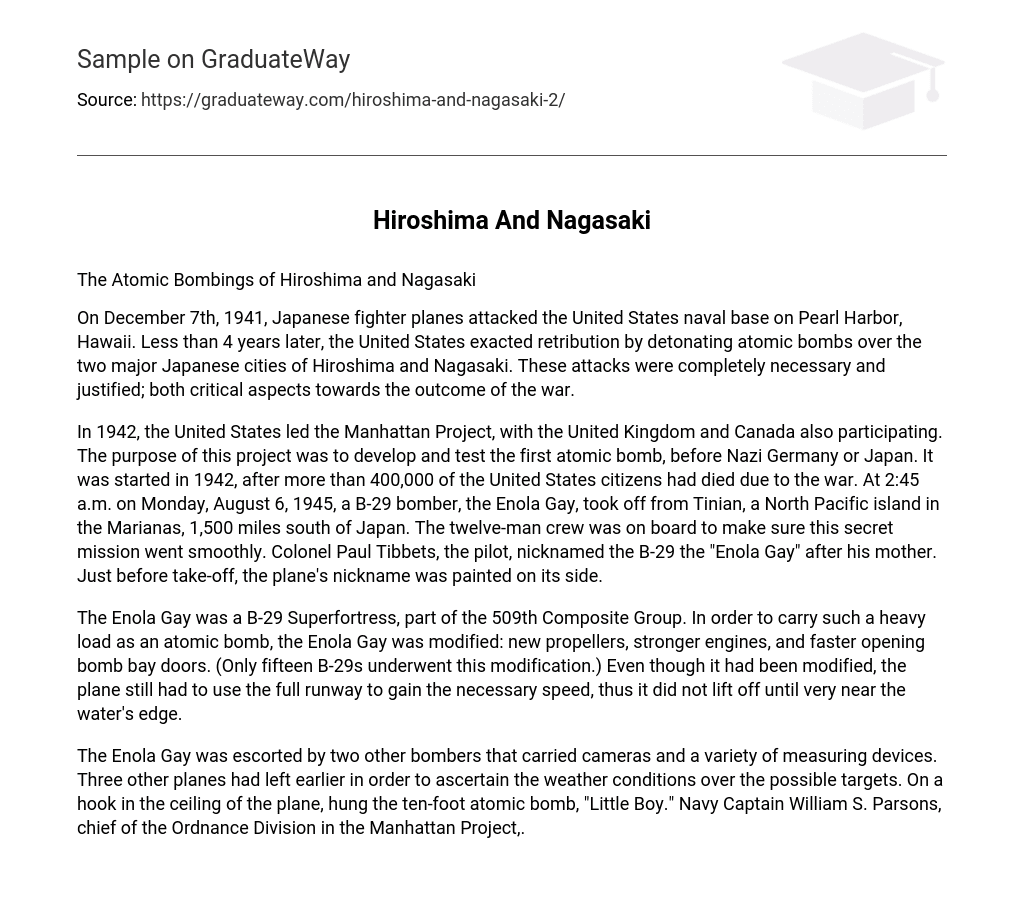The Atomic Bombings of Hiroshima and Nagasaki
On December 7th, 1941, Japanese fighter planes attacked the United States naval base on Pearl Harbor, Hawaii. Less than 4 years later, the United States exacted retribution by detonating atomic bombs over the two major Japanese cities of Hiroshima and Nagasaki. These attacks were completely necessary and justified; both critical aspects towards the outcome of the war.
In 1942, the United States led the Manhattan Project, with the United Kingdom and Canada also participating. The purpose of this project was to develop and test the first atomic bomb, before Nazi Germany or Japan. It was started in 1942, after more than 400,000 of the United States citizens had died due to the war. At 2:45 a.m. on Monday, August 6, 1945, a B-29 bomber, the Enola Gay, took off from Tinian, a North Pacific island in the Marianas, 1,500 miles south of Japan. The twelve-man crew was on board to make sure this secret mission went smoothly. Colonel Paul Tibbets, the pilot, nicknamed the B-29 the “Enola Gay” after his mother. Just before take-off, the plane’s nickname was painted on its side.
The Enola Gay was a B-29 Superfortress, part of the 509th Composite Group. In order to carry such a heavy load as an atomic bomb, the Enola Gay was modified: new propellers, stronger engines, and faster opening bomb bay doors. (Only fifteen B-29s underwent this modification.) Even though it had been modified, the plane still had to use the full runway to gain the necessary speed, thus it did not lift off until very near the water’s edge.
The Enola Gay was escorted by two other bombers that carried cameras and a variety of measuring devices. Three other planes had left earlier in order to ascertain the weather conditions over the possible targets. On a hook in the ceiling of the plane, hung the ten-foot atomic bomb, “Little Boy.” Navy Captain William S. Parsons, chief of the Ordnance Division in the Manhattan Project,.





